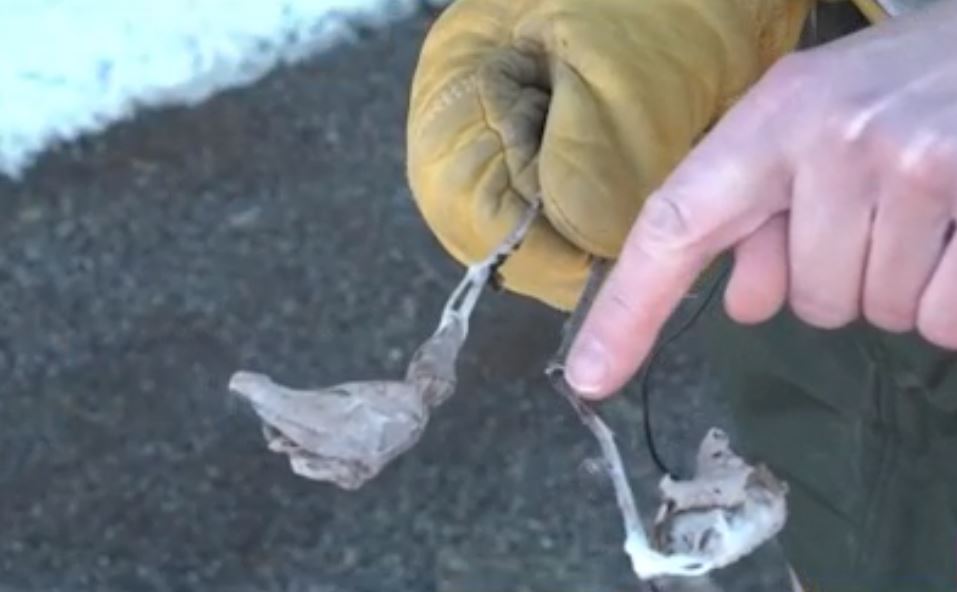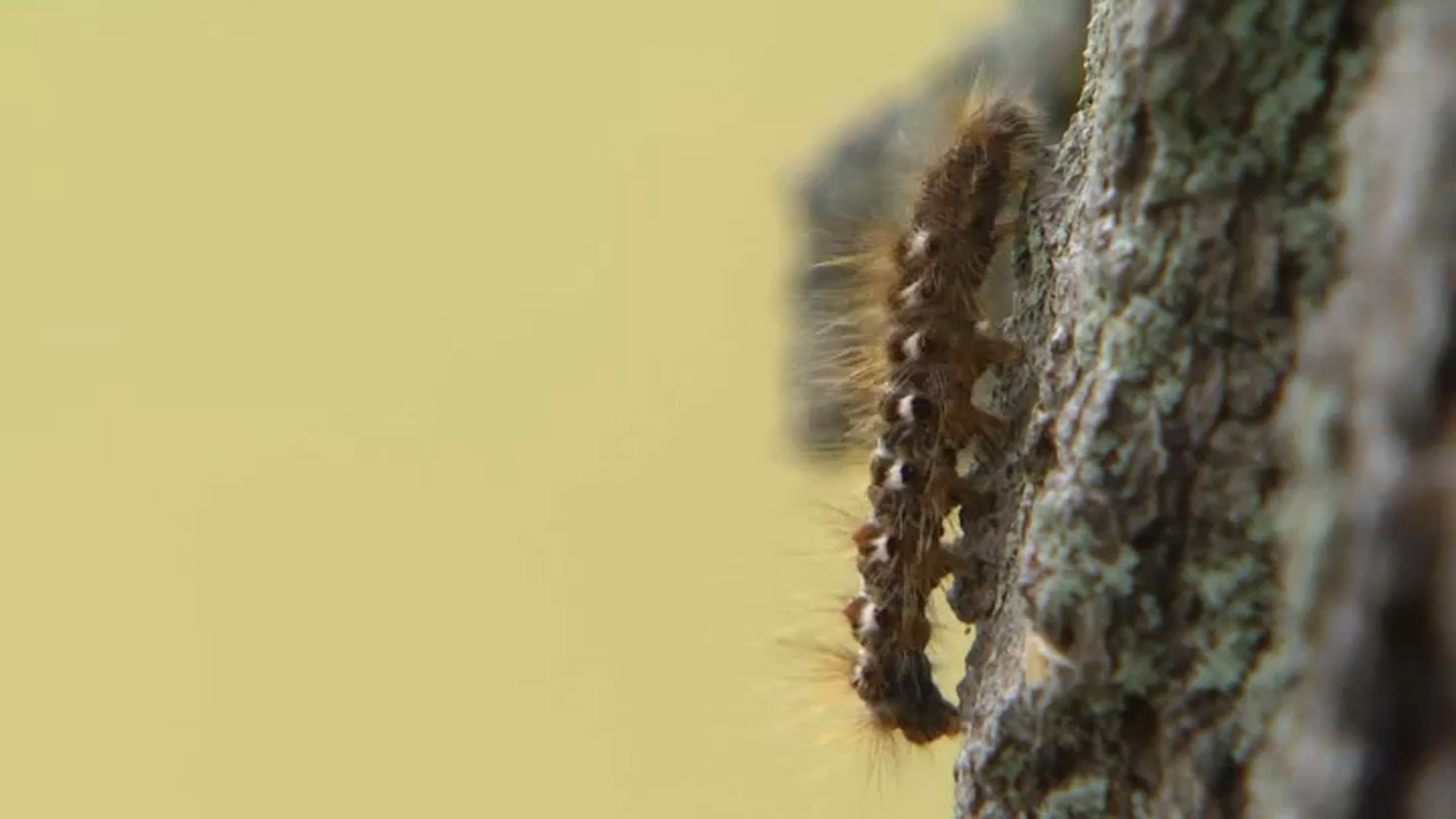Spongy moths have been plaguing homes in western Vermont in recent weeks.
Insatiable eaters, the pests attack trees, particularly oak trees, among other plants, as well as houses and garage walls, NBC affiliate WPTZ reported.
"For the most part, these trees are able to be kind of resilient and can withstand a year or two of defoliation in general," said Josh Halman, forest health lead at the state Department of Forests, Parks and Recreation. "But there are certainly some cases where trees are stressed otherwise and those are the ones that might fall victim to spongy moth damage."
It's the state's worst spongy moth outbreak in 30 years, and is expected to return next year. An outbreak this severe may even last up to five years, according to scientists.
Get Boston local news, weather forecasts, lifestyle and entertainment stories to your inbox. Sign up for NBC Boston’s newsletters.
“It feels gross,” Winooski homeowner Serifa Cicak said of the invasion of spongy moth caterpillars in her backyard. “It’s really bad, as you can see.”
Judy Rosovsky, the state entomologist, who works in the Vermont Agency of Agriculture, told NECN & NBC10 Boston Friday that a natural fungus had long kept the caterpillar population here in check. However, that fungus has waned, Rosovsky explained, so this will now be a boom year for the spongy moth.
In 2021, spongy moth caterpillars were caused the largest disturbance to Vermont's forests as seen from aerial surveys, according to the state.
The spongy moth used to be known by the name gypsy moth.
"I have a friend who wears a big hat, because she can’t stand getting the frass — the caterpillar poop — on her," said Rosovsky, noting Colchester seems to be among the hardest-hit communities this year.
In Hinesburg, residents pointed to a hillside near Champlain Valley Union High School as one visible example of defoliation. Large brown spots on the hillside were visible where leaves had been chewed off trees.
In 2021, the voracious eaters chewed through some 51,000 acres of Vermont leaves, Rosovsky said, with a particular hunger for oak trees. This year, the caterpillar numbers are expected to be higher, the entomologist said.
"They’re going to get bigger and they’re going to eat more," Rosovsky warned.
The good news, Rosovsky noted, is that in most cases, long-term tree health should be okay.
"For the most part, these trees are able to be kind of resilient and can withstand a year or two of defoliation in general," Josh Halman, the forest health lead at the Vermont Department of Forests, Parks and Recreation told NECN & NBC10 Boston’s Vermont affiliate partner, NBC5 News. "But there are certainly some cases where trees are stressed otherwise and those are the ones that might fall victim to spongy moth damage."
Cicak said her husband has been waging war against the invaders in their backyard, by spraying with an insect killer and wrapping his plum trees with tape and netting to keep the pests from getting at the leaves.
Aerial spraying by the state would be really difficult, Rosovsky lamented, adding that Vermonters should brace for several more weeks of annoyance.
"Think of them as black flies," Rosovsky advised, emphasizing that she sympathizes with families experiencing severe annoyance from the caterpillars. "They’re going to be around, they’re going to bother you, they’re going to go away. They’re going to really bother you!"
More information about the spongy moth caterpillar is available through the Vermont Department of Forests, Parks, and Recreation and from the Vermont Invasives website.
Cicak said she hopes conditions change, so she doesn’t have to deal with another nasty outbreak next year. However, NBC5 reported experts say outbreaks can stretch across five years.
“Hopefully, it’ll go away soon,” Cicak wished.



